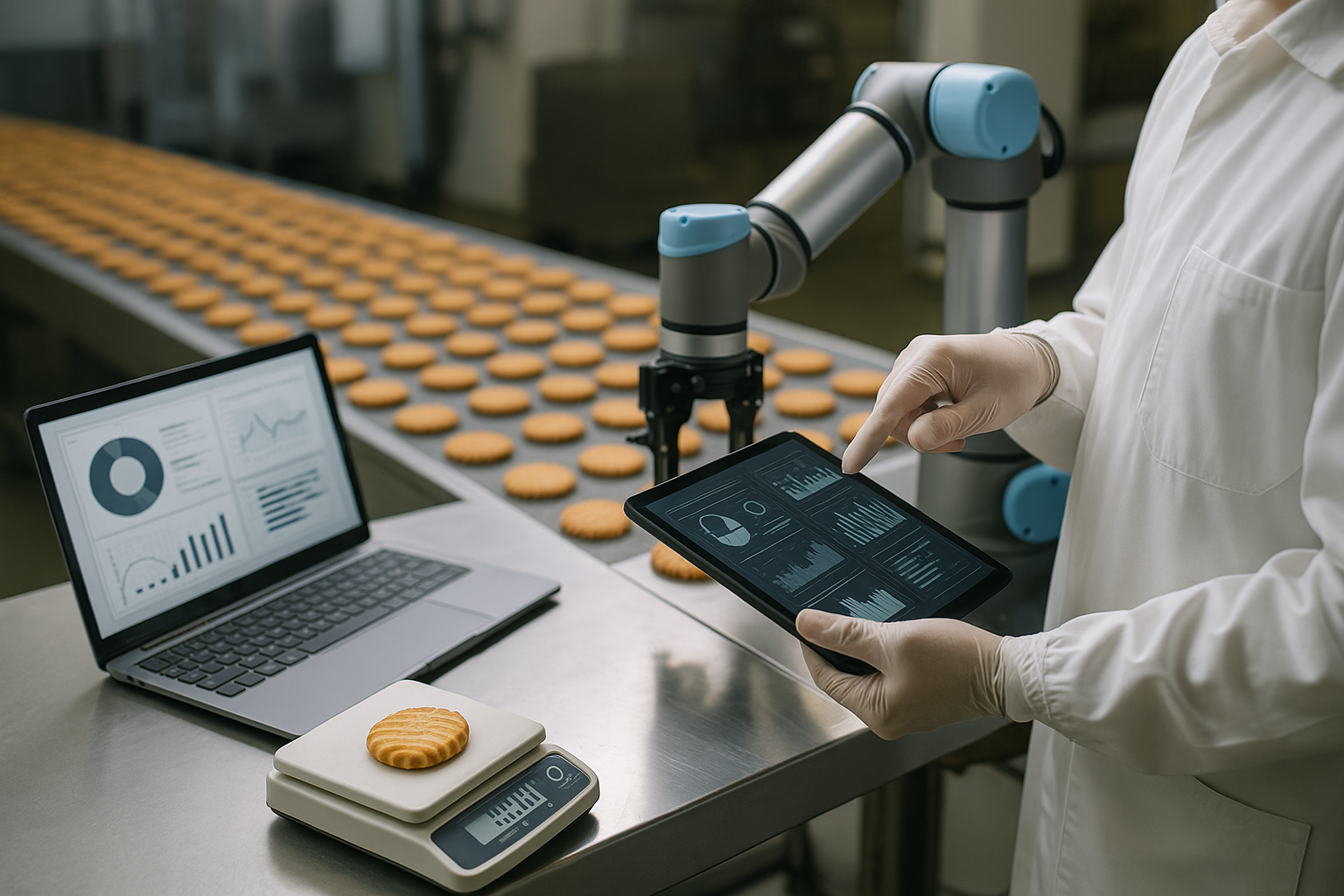Blockchain and IoT advance traceability, but food industry lags in strategic tech use
The research finds that food manufacturers are largely focused on Quality Control and Quality Assurance when adopting digital technologies. Quality Control, representing 51% of the reviewed applications, is heavily supported by cybernetic technologies like smart sensors, artificial intelligence (AI), and machine learning (ML).

The food manufacturing industry is at a pivotal moment where the benefits of digital transformation in quality management are clear but underutilized. A new study published in the Foods presents a comprehensive framework for the integration of Industry 4.0 technologies in food quality management.
Titled "Advances in Food Quality Management Driven by Industry 4.0: A Systematic Review-Based Framework", the study analyzes 69 peer-reviewed articles to develop a Food Quality Management 4.0 (FQM 4.0) framework. This framework conceptually connects digital technologies with five core managerial quality functions: Quality Design (QD), Quality Control (QC), Quality Improvement (QI), Quality Assurance (QA), and Quality Policy and Strategy (QPS). It also positions food safety as a transversal element, underpinning all managerial domains.
Which quality functions are most digitally enabled?
The research finds that food manufacturers are largely focused on Quality Control and Quality Assurance when adopting digital technologies. Quality Control, representing 51% of the reviewed applications, is heavily supported by cybernetic technologies like smart sensors, artificial intelligence (AI), and machine learning (ML). These tools are employed for real-time monitoring, detection, classification, fraud prevention, and assessment. Smart sensors, in particular, are widely used to track parameters such as temperature, humidity, and gas concentrations during food production, with applications ranging from assessing milk composition to detecting adulterants in spice samples.
Quality Assurance, accounting for 23% of the reviewed cases, is primarily supported by connectivity and integration technologies such as blockchain and the Internet of Things (IoT). These technologies enhance traceability, facilitate audits, and help enforce compliance with safety and certification protocols. Blockchain applications cited in the study enable secure, transparent documentation of food production processes and ingredient sourcing, supporting both consumer trust and regulatory oversight.
In contrast, functions like Quality Design, Quality Improvement, and Quality Policy and Strategy remain significantly underrepresented. Quality Design accounts for only 4% of examples, primarily due to the absence of real-world implementation tools like Quality Function Deployment or Design of Experiments. Instead, design-related applications are largely limited to simulations and sensor-based prototype development.
Similarly, Quality Improvement and Quality Policy and Strategy, focused on internal process optimization and long-term strategic planning, appear in only 11% and 10% of reviewed examples, respectively. These functions tend to be more internally focused and less visible to consumers, which may explain the relatively low industry investment and academic interest in digitizing them.
How are industry 4.0 technologies applied across quality domains?
The study categorizes digital technologies into four key clusters: Cybernetics (smart sensors, AI, ML, robotics), Connectivity and Integration (IoT, blockchain, cybersecurity), Data Management (big data, cloud computing), and Simulation and Extended Reality (digital twins, cyber-physical systems). Each of these is mapped to one or more quality management functions based on usage trends across the literature.
Cybernetics technologies dominate the landscape, especially in QC and QI. Smart sensors and AI are repeatedly cited for enhancing inspection, monitoring, and anomaly detection capabilities. These tools also support predictive analytics and automation in routine quality checks, replacing slower, destructive testing methods.
Blockchain and IoT lead the connectivity and integration category, with primary use cases in QA and QPS. These tools facilitate food traceability, product authentication, and supply chain visibility. IoT enables real-time communication between devices, allowing for automated decision-making and system responses to environmental or operational changes.
Big data analytics plays a limited but emerging role in Quality Improvement, where it supports process optimization and the reduction of human error. Digital twins, meanwhile, are used for simulating manufacturing conditions and process behaviors in Quality Design and Control, aiding faster prototype development and more accurate process adjustments.
Notably absent from the reviewed studies are cloud technologies and cybersecurity applications. Despite the vital role these technologies play in data storage and protection, they are currently overlooked in the context of food quality management. The authors highlight this as a critical blind spot, especially given the volume and sensitivity of data generated by food production systems.
What is the framework’s industrial relevance and technological maturity?
The Food Quality Management 4.0 framework aims to help companies align their digital transformation strategies with specific quality functions, offering a structured path for technological adoption. However, the study finds that most proposed solutions remain at a low Technology Readiness Level (TRL). Nearly 84% of the innovations reviewed are at the conceptual or laboratory validation stage, with only a small fraction reaching pilot or operational phases.
To assess the framework’s real-world applicability, the authors conducted a validation survey across 30 Brazilian food companies. The responses show that the most widely implemented technology-function pairing is Cybernetics in Quality Control, consistent with literature trends. Applications include computer vision systems, automated pH monitoring, and gas sensors for freshness detection.
Adoption of technologies for QD, QI, and QPS remains low. Several respondents reported no digital integration in their quality processes at all. Identified barriers include high implementation costs, lack of skilled personnel, weak organizational digital culture, and low prioritization of quality departments in overall strategic planning.
To overcome these barriers, the authors recommend collaborative efforts such as public–private partnerships, pilot programs, and capacity-building initiatives. They also stress the need for broader empirical studies to test the framework across different industry segments, such as meat processing, beverage production, and grain storage.
- READ MORE ON:
- Industry 4.0 in food manufacturing
- Digital technologies in food industry
- Food safety digital transformation
- Internet of Things in food processing
- Big data food industry applications
- Traceability technologies in food supply chain
- blockchain and artificial intelligence in food manufacturing
- FIRST PUBLISHED IN:
- Devdiscourse










